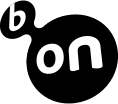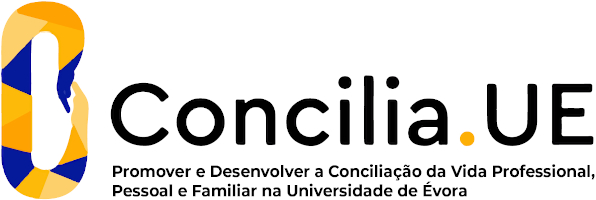2024
Bromatology and Human Nutrition
Name: Bromatology and Human Nutrition
Code: CMS13809L
6 ECTS
Duration: 15 weeks/156 hours
Scientific Area:
Biochemistry, Biological Sciences
Teaching languages: Portuguese
Languages of tutoring support: Portuguese, English
Regime de Frequência: Presencial
Presentation
This Curricular Unit aims to provide the students with the knowledge on Food Chemistry/Biochemistry and Nutritional Sciences in order to have competences to characterize the different groups of nutrients, evaluate their chemical composition and its nutritional value and their quality control.
Sustainable Development Goals
Learning Goals
The aim of this course unity is to provide the students with Knowledge on the chemical composition of nutrients and their nutritional value and ability to elaborate a diet that fills the needs of specific population groups. Students will be able to understand and evaluate the possible changes on foods that could take place during all the procedure and storage, and execute the main analytical methods and techniques used for their control.
This curricular unit should develop instrumental, interpersonal and systemic competences, including capacity of students to research, selected and interpret scientific contents and these implications in the field of the Chemistry and Biochemistry of Food and Science of Nutrition.
This curricular unit should develop instrumental, interpersonal and systemic competences, including capacity of students to research, selected and interpret scientific contents and these implications in the field of the Chemistry and Biochemistry of Food and Science of Nutrition.
Contents
Bromatology, Food and human Nutrition. Food historic perspective.
Principles of Nutrition. The nutritional needs of the human body. Macro and micronutrients.
Characterization of the different groups of nutrients. Physical and chemical methods to preserve foods. Chemical and Biochemical analysis of foods. Food safety.
Principles of food toxicology. Natural and microbial toxins.
Nutritional values for Foods. Recommended daily doses. Nutritional education. Development of a healthy diet plan. Nutrition in the various age groups; nutrition in paediatrics and geriatrics. Nutrition in health and disease.
Food supplements. Functional, diet and light foods. Legislation.
Principles of Nutrition. The nutritional needs of the human body. Macro and micronutrients.
Characterization of the different groups of nutrients. Physical and chemical methods to preserve foods. Chemical and Biochemical analysis of foods. Food safety.
Principles of food toxicology. Natural and microbial toxins.
Nutritional values for Foods. Recommended daily doses. Nutritional education. Development of a healthy diet plan. Nutrition in the various age groups; nutrition in paediatrics and geriatrics. Nutrition in health and disease.
Food supplements. Functional, diet and light foods. Legislation.
Teaching Methods
The proposed teaching and learning methodology aim to provide students with solid knowledge in Bromatology and Food Sciences and in Nutrition Sciences, enabling them to identify the main food groups based on their chemical composition, physiological effects, and nutritional value, as well as to develop the ability to design balanced diets tailored to the specific needs of different population groups.
The teaching and learning process is grounded in students? individual work, supported by recommended bibliography, and encourages active participation both inside and outside the classroom. It seeks to develop a proactive attitude of students, emphasizing the development of analytical and research skills, the ability to search for information, interpret and discuss experimental results, and cultivate a critical mindset and scientific rigor in identifying and interpreting real-world applied problems.
The complementarity between theoretical and practical components will allow for the integration of acquired concepts and their application in experimental activities, including planning, teamwork, and the application of knowledge to solving practical problems within the fields of Bromatology and Nutrition. Theoretical classes will be carried in plenary sessions using audiovisual resources for the presentation of content and applied examples. Practical classes, that include laboratorial classes and theoretical-practical application sessions with case studies, will require students to work collaboratively, engaging in the planning and execution with discussion of projects that illustrate practical applications of the concepts taught.
The teaching and learning process is grounded in students? individual work, supported by recommended bibliography, and encourages active participation both inside and outside the classroom. It seeks to develop a proactive attitude of students, emphasizing the development of analytical and research skills, the ability to search for information, interpret and discuss experimental results, and cultivate a critical mindset and scientific rigor in identifying and interpreting real-world applied problems.
The complementarity between theoretical and practical components will allow for the integration of acquired concepts and their application in experimental activities, including planning, teamwork, and the application of knowledge to solving practical problems within the fields of Bromatology and Nutrition. Theoretical classes will be carried in plenary sessions using audiovisual resources for the presentation of content and applied examples. Practical classes, that include laboratorial classes and theoretical-practical application sessions with case studies, will require students to work collaboratively, engaging in the planning and execution with discussion of projects that illustrate practical applications of the concepts taught.
Assessment
The evaluation process will be based on the individual work and on the progress in the theoretical and practical components of this curricular unit. Practical component (NL) will be evaluated continuously basis based on attendance, previous preparation and planning of experimental work and performance during the execution of the work, interpretation and data treatment, preparation of a research work and oral discussion of the work carried out.
The theoretical component (NT) can be evaluated in two optional modalities: two tests or a final exam.
The final classification (NF) will be calculated on base as follow: NF=0.4*NL+0.6*NT.
The theoretical component (NT) can be evaluated in two optional modalities: two tests or a final exam.
The final classification (NF) will be calculated on base as follow: NF=0.4*NL+0.6*NT.





















